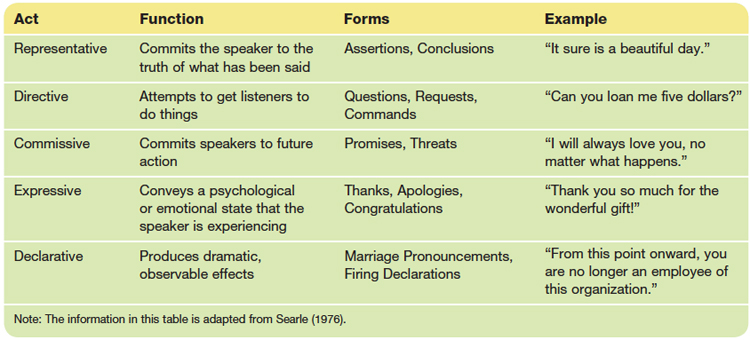6.2.5 Performing Actions
Printed Page 188
Performing Actions
A fourth function of verbal communication is that it enables us to take action. We make requests, issue invitations, deliver commands, or even taunt—as Ali did to his competitors. We also try to influence others’ behaviors. We want our listeners to grant our requests, accept our invitations, obey our commands, or suffer from our curses. The actions that we perform with language are called speech acts (Searle, 1969). (See Table 6.1, below, for types of speech acts.)
During interpersonal encounters, the structure of our back-and-forth exchange is based on the speech acts we perform (Jacobs, 1994; Levinson, 1985). When your professor asks you a question, how do you know what to do next? You recognize that the words she has spoken constitute a “question,” and you realize that an “answer” is expected as the relevant response. Similarly, when your best friend text-messages you and inquires, “Can I borrow your car tonight?” you immediately recognize his message as a “request.” You also understand that two speech acts are possible as relevant responses: “granting” his request (“no problem”) or “rejecting” it (“I don’t think so”).
Table 6.1 Types of Speech Acts

Note: The information in this table is adapted from Searle (1976).